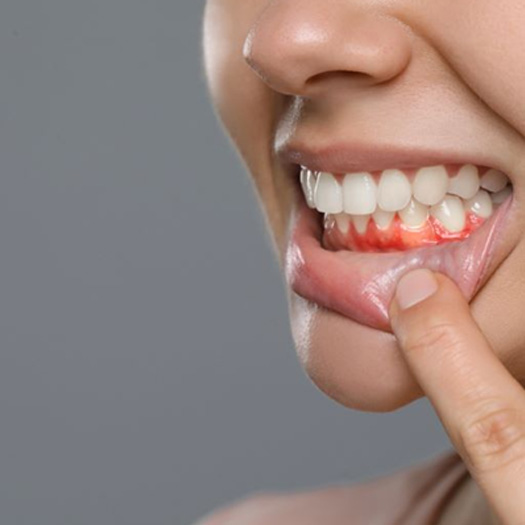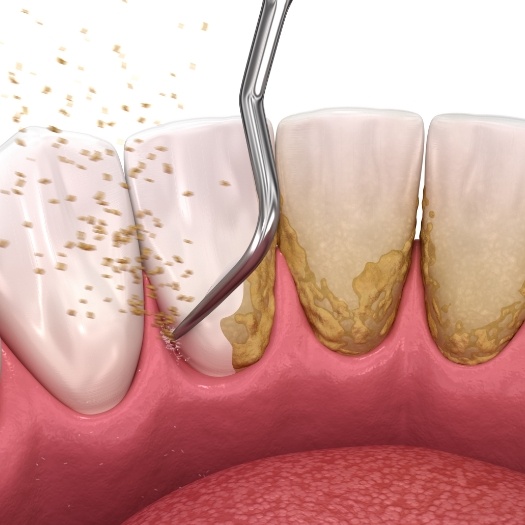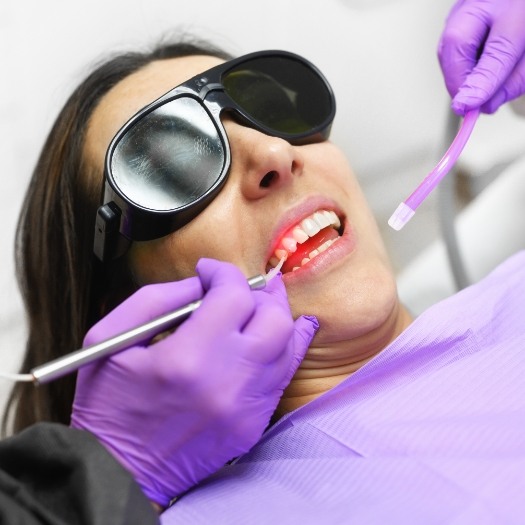Gum Disease Treatment San Antonio
Preventing Bone Erosion & Tooth Loss

According to the National Institute of Dental and Craniofacial Research, it is estimated that in 2022, almost 50% of U.S. adults between the ages of 45 and 64 suffered from some form of gum disease. Alongside tooth decay as one of the most prevalent oral health problems, gum disease affects more than just your teeth and gums. It is known to be a common link to more than 60 other health conditions (i.e., diabetes, heart disease, Alzheimer’s, etc.)! If you notice that your gums are swollen, bleeding, or tender to the touch, don’t wait to call our San Antonio dental office to schedule an appointment to discuss gum disease treatment options.
Why Choose Orbis Dental Group for Gum Disease Treatment?
- Laser Dental Treatment for Improved Results
- Board-Certified Periodontist On-Staff
- Enhanced Dental Technologies for Precise & Comfortable Treatment
What Is Gum Disease?

Gum disease, also known as periodontal disease, is an infection of the soft tissue that surrounds the roots of teeth. Gingivitis, the early stage of gum disease, is relatively mild and may be reversible before it causes permanent damage. Periodontitis is the advanced form of gum disease. Without timely treatment, it can significantly damage the gums and the underlying bone structure. In fact, it is a leading cause of tooth loss. It is also associated with an increased risk of many systemic health problems, including diabetes, heart problems, Alzheimer’s, and more.
Symptoms of Gum Disease

Signs of gingivitis include:
- Persistent bad breath
- Swollen or red gums
- Gums that bleed easily when you brush and floss
- Tender gums
- Minor gum recession
Periodontitis can also cause the above-listed symptoms, but it is more severe than gingivitis. The gum recession may be more noticeable; your teeth may start to look unusually long. They may even become loose. Pain, changes in bite, and dental sensitivity may also occur.
How Do We Treat Gum Disease?

The best treatment for gum disease depends on the specifics of each case. Dr. Hachem, our on-staff periodontist, will evaluate your situation and recommend your next steps. We always try to favor more conservative options whenever the situation allows for it. Here is an overview of some of the methods we often use to fight gum disease:
Scaling & Root Planing

Scaling and root planing are usually done as a combination treatment for infected gums. To minimize discomfort, we administer a local anesthetic to numb the treatment areas. Scaling is the first step. We use manual dental tools and ultrasonic scalers to loosen and remove deposits of plaque, tartar, and bacteria from above and below the gumline. The loosened material is then flushed away with water.
Root planing smooths the rough surfaces on the roots of the teeth, which makes it more difficult for bacteria to cling to them. It also encourages reattachment of the teeth to the gums.
Antibiotic Treatment

As part of our approach to using antibiotic therapy to treat gum disease, we will first take an OralDNA test to determine the specific types of bacteria that are present, as this will allow our team to formulate a more targeted method of treatment. With antibiotic therapy, we can apply it directly to the gum pockets, allowing the medicine to disperse over time and eliminate bacteria in hard-to-reach areas.
Laser Periodontal Treatment

Often used in addition to other forms of gum disease treatment, laser therapy allows for easier access to the inflamed gum tissue. By using our diode laser, we can remove infected tissues around the root as well as any plaque and tartar above and below the gumline. Through this process, it is less likely that bacteria will accumulate in the future, allowing your gums to properly heal and reattach to your teeth.
Surgical Periodontal Treatment

When the treatment options listed above are not enough to eliminate infection, we may turn to surgical treatment. Our board-certified periodontist, Dr. Hachem, can administer an array of services that include pocket reduction surgery, soft tissue grafts, bone grafts, and more. She will meet with you to discuss your needs, address your concerns, and formulate a treatment plan that fits your unique situation.
I Need a Checkup & Cleaning I Want a Holistic Dentist I Have a Cavity or Broken Tooth I Want a Straighter Smile I am Missing One or More Teeth I Want to Enhance My Smile I Have Jaw Pain I'm Having Trouble Sleeping I am Scared of the Dentist I Have a Dental Emergency View Our Services

